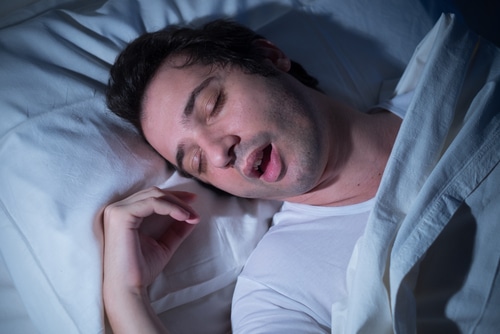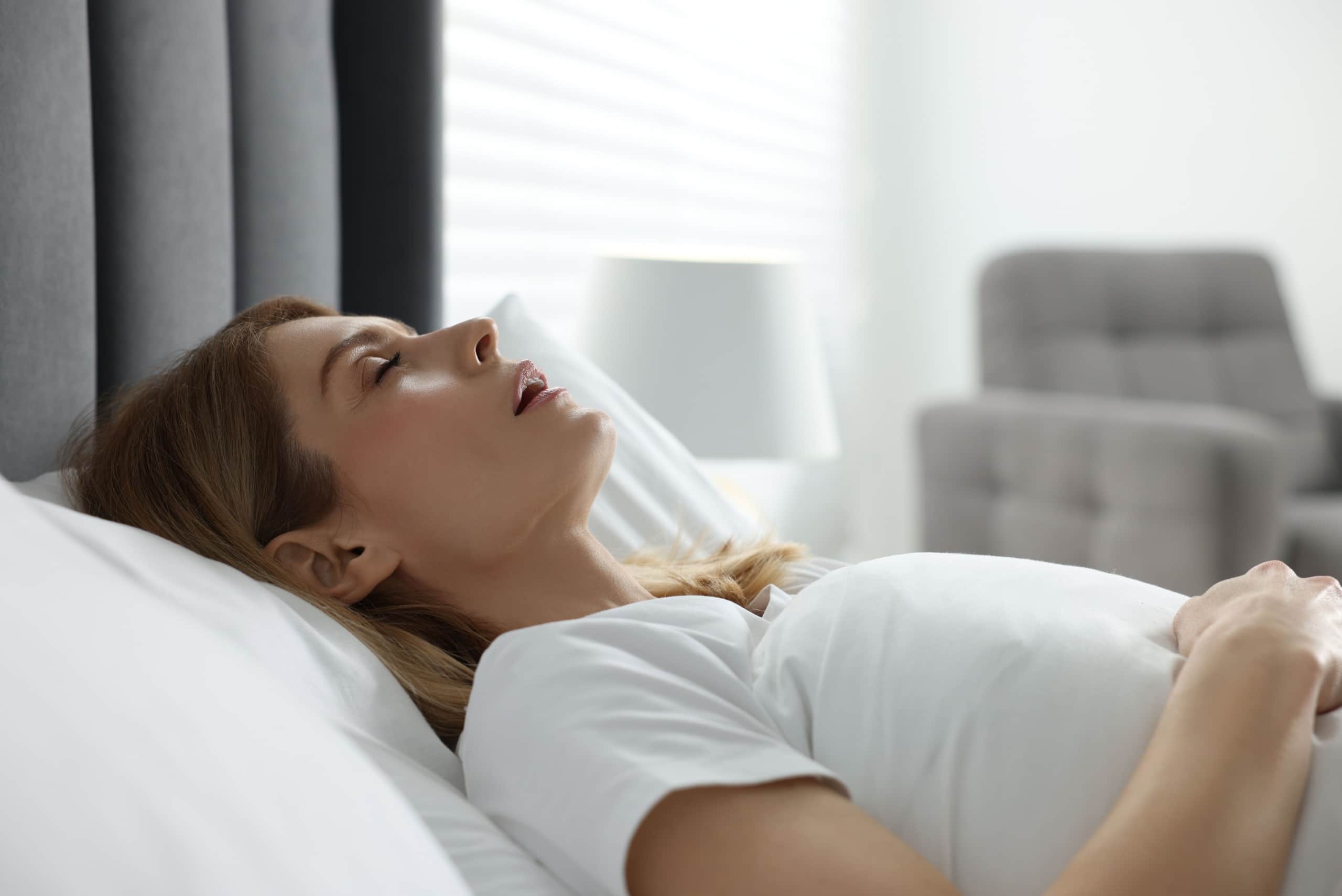When loud snoring is interrupted by frequent episodes of totally obstructed breathing, it is known as obstructive sleep apnea. Serious episodes last more than ten seconds each and occur more than seven times per hour. Apnea patients may experience 30 to 300 such events per night. These episodes can reduce blood oxygen levels, causing the heart to pump harder.
The immediate effect of sleep apnea is that the snorer must sleep lightly and keep his muscles tense in order to keep airflow to the lungs. Because the snorer does not get a good rest, he may be sleepy during the day, which impairs job performance and makes him a hazardous driver or equipment operator. After many years with this disorder, elevated blood pressure and heart enlargement may occur.
What is Sleep Apnea?
Sleep apnea is a common and serious sleep disorder that affects millions of people around the world. It is marked by repeated episodes where breathing stops or becomes very shallow during sleep, often due to a blockage or collapse in the upper airway. The most prevalent form, known as obstructive sleep apnea (OSA), accounts for the vast majority of cases. In OSA, the upper airway becomes blocked during sleep, leading to breathing pauses that can last several seconds and occur many times throughout the night. These interruptions disrupt normal sleep patterns, often resulting in excessive daytime sleepiness, fatigue, and a range of other health issues. If left untreated, sleep apnea can significantly impact quality of life and overall health, making it important to recognize and address this sleep disorder early.
Definition and Types of Obstructive Sleep Apnea
Obstructive sleep apnea (OSA) is defined as a sleep disorder in which the upper airway repeatedly becomes partially or completely blocked during sleep, causing breathing pauses or shallow breathing. These episodes can lead to drops in blood oxygen levels and frequent awakenings throughout the night.
There are three main types of sleep apnea: obstructive sleep apnea (OSA), which is caused by a physical blockage of the upper airway; central sleep apnea (CSA), which results from the brain failing to send proper signals to the muscles that control breathing; and mixed sleep apnea (MSA), which is a combination of both OSA and CSA.
The severity of OSA is often measured by the number of breathing pauses per hour: mild sleep apnea involves fewer than 15 pauses, while moderate to severe OSA is defined by 15 or more pauses per hour. Recognizing the type and severity of sleep apnea is essential for choosing the most effective treatment.
Risk Factors for OSA
Several factors can increase the likelihood of developing obstructive sleep apnea. Obesity is one of the most significant risk factors, as excess weight can contribute to upper airway obstruction. Men are more likely to experience OSA than women, and the risk increases with age. A family history of sleep apnea, a large neck circumference, or certain physical features such as a narrow airway or recessed jaw can also raise the risk. Lifestyle factors like smoking and the use of sedatives or tranquilizers may further contribute to airway collapse during sleep. Additionally, medical conditions such as high blood pressure, heart disease, and diabetes are linked to a higher risk of OSA. Understanding these risk factors can help individuals and healthcare providers identify those who may benefit from early screening and intervention.
Loud Snoring Is A Problem
Forty-five percent of normal adults snore at least occasionally, and 25 percent are habitual snorers. Thirty percent of adults over age 30 are snorers. By middle age, that number reaches 40 percent. Clearly, snoring is a dilemma affecting spouses, family members, and sometimes neighbors.
Snoring sounds are caused when there is an obstruction to the free flow of air through the passages at the back of the mouth and nose. This area is the collapsible part of the airway where the tongue and upper throat meet the soft palate and uvula. Enlarged or relaxed soft tissue in the upper airway is a common risk factor for developing sleep apnea, as it can contribute to airway narrowing and collapse during sleep. Snoring can also be an early sign of developing sleep apnoea, and OSA patients often experience significant health impacts due to repeated airway obstruction when these structures strike each other and vibrate during breathing, resulting in snoring.
Can Heavy Snoring be Cured?
Heavy snorers, those who snore in any position or are disruptive to the family, should seek medical advice to ensure that sleep apnea is not a problem. An otolaryngologist will provide a thorough examination of the nose, mouth, throat, palate, and neck.
A sleep study in a laboratory environment may be necessary to determine how serious the snoring is and what effects it has on the snorer’s health. During a sleep study, nasal and oral airflow is monitored to detect apneas and hypopneas. Sleep stages are also recorded during polysomnography to assess sleep quality and identify disruptions. Respiratory events, including apneas and hypopneas, are key metrics in diagnosing sleep apnea. Obstructive events are distinguished from other types of apneas during sleep studies to better understand the underlying cause. Home sleep testing is also available as a convenient and accessible diagnostic option for some patients.
Snoring Treatment
Treatment depends on the diagnosis. An examination will reveal if the snoring is caused by nasal allergy, infection, deformity, or tonsils and adenoids.
Snoring or obstructive sleep apnea may respond to various treatments now offered by many otolaryngologist-head and neck surgeons. These interventions are designed to treat OSA by addressing airway obstruction.
- Uvulopalatopharyngoplasty (UPPP) is a surgical procedure for treating obstructive sleep apnea. It tightens flabby tissues in the throat and palate and expands air passages.
- Laser-Assisted Uvula Palatoplasty (LAUP) treats snoring and mild obstructive sleep apnea by removing the obstruction in the airway. A laser is used to vaporize the uvula and a specified portion of the palate in a series of small procedures in a doctor’s office under local anesthesia. Radiofrequency ablation, some with temperature control approved by the FDA, utilizes a needle electrode to emit energy to shrink excess tissue in the upper airway, including the palate and uvula (for snoring), the base of the tongue (for obstructive sleep apnea), and nasal turbinates (for chronic nasal obstruction).
- Genioglossus and hyoid advancement is a surgical procedure for the treatment of sleep apnea. It prevents a collapse of the lower throat and pulls the tongue muscles forward, thereby opening the obstructed airway. Some treatments aim to improve upper airway muscle tone to prevent airway collapse.
If surgery is too risky or unwanted, the patient may sleep every night with a nasal mask that delivers air pressure into the throat; this is called continuous positive airway pressure or “CPAP”. An oral appliance, such as a mandibular advancement device, may be recommended for patients who cannot tolerate CPAP.
A chronically snoring child should be examined for problems with his or her tonsils and adenoids. A tonsillectomy and adenoidectomy may be required to return the child to full health. In cases of severe sleep apnea, more intensive interventions may be necessary due to the increased health risks and frequency of breathing disruptions.
Diagnosis and Testing for Obstructive Sleep Apnea
Diagnosing obstructive sleep apnea typically involves a thorough review of medical history, a physical examination, and specialized sleep studies. Many patients begin with a home sleep apnea test (HSAT), which monitors breathing patterns, oxygen levels, and other vital signs while sleeping at home. For a more comprehensive assessment, an overnight sleep study (also known as polysomnography) may be conducted at a sleep center.
The American Academy of Sleep Medicine recommends using the apnea-hypopnea index (AHI) to determine the severity of OSA: an AHI of 5-15 indicates mild OSA, 15-30 is considered moderate, and over 30 is classified as severe OSA. Sleep specialists may also use additional tools, such as actigraphy, to evaluate sleep quality and diagnose OSA accurately. Early and accurate diagnosis is key to managing this sleep disorder and improving overall health.
Self-Help for the Light Snorer
Adults who suffer from mild or occasional snoring should try the following self-help remedies:
- Adopt a healthy and athletic lifestyle to develop good muscle tone and lose weight.
- Avoid tranquilizers, sleeping pills, and antihistamines before bedtime.
- Avoid alcohol for at least four hours and heavy meals or snacks for three hours before retiring.
- Establish regular sleeping patterns
- Sleep on your side rather than your back.
- Tilt the head of your bed upwards four inches.
Restless sleep and frequent awakenings may indicate a more serious problem, such as obstructive sleep apnea. If you experience persistent daytime fatigue or excessive sleepiness, it may be a sign that you need medical evaluation. People with sleep apnea may unintentionally fall asleep during the day due to disrupted sleep and poor nighttime rest.
Remember, snoring means obstructed breathing, and obstruction can be serious. It’s not funny, and not hopeless.
Schedule a Consultation in Denver, Lone Tree or Castle Rock
If you’ve been struggling with sleep apnea symptoms, it may be time for a professional diagnosis. Serving Denver, Lone Tree, and Castle Rock, the expert team at AOO | ENT Specialists of the Rockies is here to help you find real, lasting relief. Request an appointment today!







